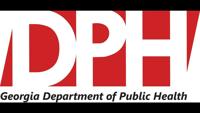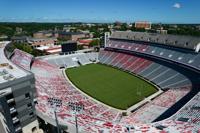The Paulding County Board of Education has adopted a budget for next school year that funds a range of critical initiatives, including retaining and attracting quality teachers and support staff in a highly competitive job market increasingly driven by inflation.
To support the work of its outstanding teachers, the budget maintains current class sizes while accommodating the addition of almost 1,600 students, the largest increase in enrollment in more than 15 years.
Other critical initiatives in the budget include significant enhancements to safety and security, as well as improvements in technology, maintenance, and transportation.
The budget also considers the unprecedented increase in property values by decreasing the property ad valorem millage rate to 17.750 for Maintenance & Operations (M&O), the lowest school property tax rate in 16 years.
The budget maintains the current bond millage of 0.000, shifting the equivalent of more than 1.000 mill in debt service to E-SPLOST (Education Special Purpose Local Option Sales Tax), a retail sales tax shared by all consumers and not just property owners.
“While property values are determined by market trends and are set by the Board of Tax Assessors, the school district does control the millage rate,” said Superintendent Steve Barnette. “The millage rate is a percentage applied to the assessed property values, which we know have increased substantially. Property values in Paulding County have risen because we live in an attractive community with great resources and great schools. We are pleased our budget addresses several critical areas while simultaneously lowering the M&O millage rate to its lowest level in 16 years. It is important to note that Tax Assessment Notices reflect the current property ad valorem millage rate, so the tax bill taxpayers receive in the fall will be less than what they see on the notice now because the millage rate will be lower. If you have questions or concerns about the assessed value of your property, please contact the Paulding County Board of Tax Assessors.”
The budget was crafted to align directly with the school district’s new five-year Strategic Plan that was developed in collaboration with parents, teachers, county commissioners, university partners, administrators, community members, Partners in Education, and students.
Stakeholder feedback from surveys and community engagement meetings helped identify the Strategic Plan goal areas and initiatives.
The budget specifically addresses the priorities outlined in the plan to advance the school district to a new level of academic excellence.
Superintendent Barnette said the budget was specifically designed around several core areas: “Fueled by the work on our five-year Strategic Plan, I believe we have a solid understanding of the expectations and priorities of our community for the coming years,” he said. “The budget was built to address enrollment growth driven by new housing developments, without increasing our average class size. In addition, it provides well-deserved pay increases for our outstanding teachers and support staff, helps us compete for new talent in the job market, enhances safety and security, addresses learning gaps, implements phase one of a 1-to-1 student computing device initiative to ensure every student has access to technology, and maintains our school facilities while addressing overcrowded classrooms.”
Barnette said the challenge was balancing the community’s expectations and priorities with economic realities.
“Economically, the district is being challenged on three fronts. First, because of significant housing development, we are anticipating extraordinary enrollment growth in next year’s budget and beyond. To put it in perspective, the FY2023 Budget anticipates the addition of 1,661 students, which is the equivalent of adding an entire elementary and middle school — in one year. Second, rising costs are impacting the school district in much the same way they are our community at large, something we seriously considered as we crafted the budget. Finally, like other government entities and businesses, we operate in a highly competitive job market, leading to challenges in retaining and attracting employees,” he said.
To address enrollment growth without increasing average class size, the budget will add approximately 130 teachers and paraprofessionals at a cost of $7.2 million.
Because education is a people-oriented business, almost 90 percent of the budget is dedicated to funding the salaries and benefits of teachers and support staff. The ratio of employees to pupils is expected to decline to its lowest level in more than 15 years. The budget directs the vast majority of per-pupil spending to the function of “instruction,” with “central office”-related expenditures remaining below 0.500 mills, half the size of comparable school districts and the statewide average.
To remain competitive in hiring and retaining top-quality educators, the budget includes a minimum raise of $3,600 for all teachers and certified staff that increases depending on experience level. The average raise for most classroom teachers will be approximately $4,500.
An accompanying 5 percent minimum raise for all classified staff, along with a 1.4-percent average salary scale step increase, will ensure the district’s pay scale remains competitive with neighboring districts.
The budget also includes pay scale adjustments for paraprofessionals and bus drivers. The budget includes significant enhancements to safety and security totaling more than $2.5 million. Among other initiatives, the budget provides for a full-time security presence at every school, in addition to funding for School Resource Officers (SROs) through the Paulding County Sheriff’s Office and internal P.O.S.T. certified Security Officers.
Additionally, transportation funding provides for new bus monitor positions to help ensure morning and afternoon bus rides remain safe and orderly.
The implementation of a 1-to-1 technology initiative is a feature of the budget, funding phase one of the transition toward every student having his or her own electronic learning device, a move long sought by parents, students, and staff.
To address critically high bus driver vacancy rates, which continue to impact operations, the budget includes recruitment, retention, and attendance initiatives. It also includes additional funding for school maintenance to address items such as gym floors, playgrounds, and general building maintenance of our aging facilities.
This November, Paulding County residents will also be able to vote on a referendum put forth by the school board that will exempt senior citizens over the age of 65 from school property taxes used to retire bond debt and would begin a two-year phase-in to reduce the age for exemption from all school property tax from 70 to 68.
The Original Fiscal Year 2023 Budget was adopted by the Paulding County Board of Education at its June 14 meeting.
Extensive documentation regarding the FY2023 Budget is available at www.paulding.k12.ga.us/Page/46083.



























(0) comments
Welcome to the discussion.
Log In
Keep it Clean. Please avoid obscene, vulgar, lewd, racist or sexually-oriented language.
PLEASE TURN OFF YOUR CAPS LOCK.
Don't Threaten. Threats of harming another person will not be tolerated.
Be Truthful. Don't knowingly lie about anyone or anything.
Be Nice. No racism, sexism or any sort of -ism that is degrading to another person.
Be Proactive. Use the 'Report' link on each comment to let us know of abusive posts.
Share with Us. We'd love to hear eyewitness accounts, the history behind an article.